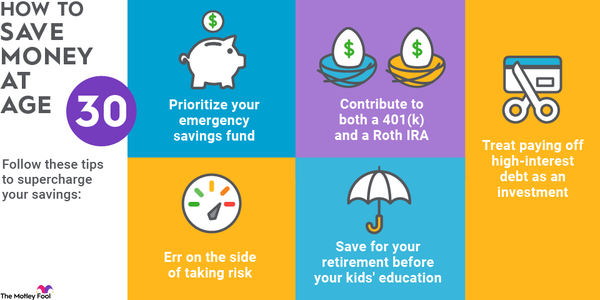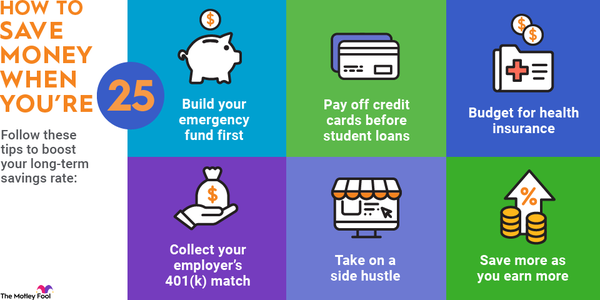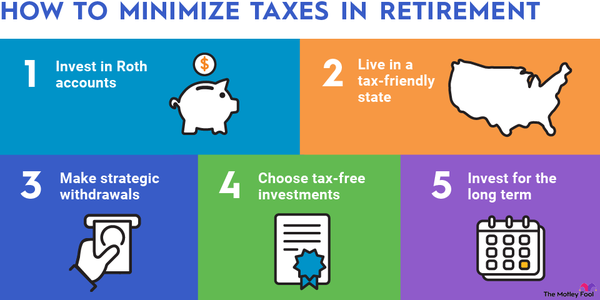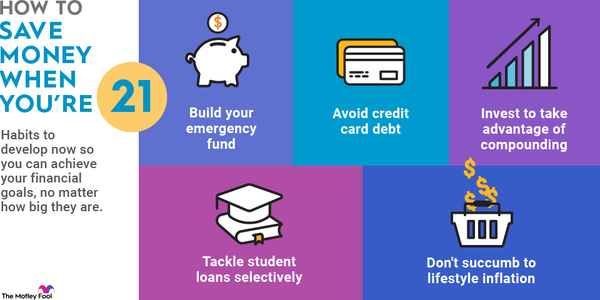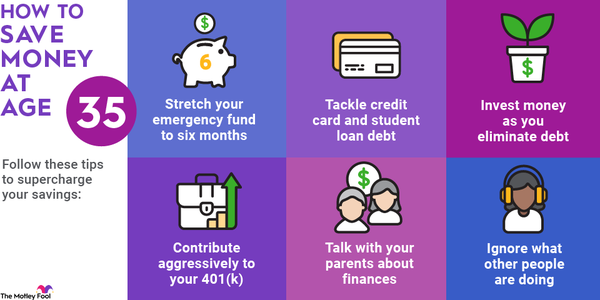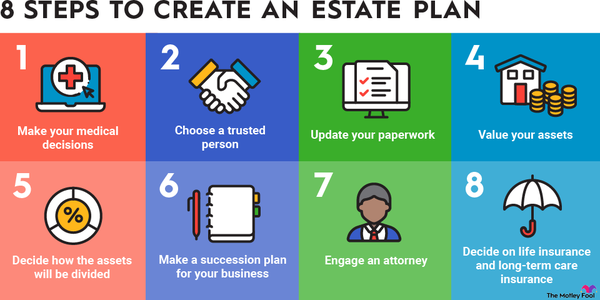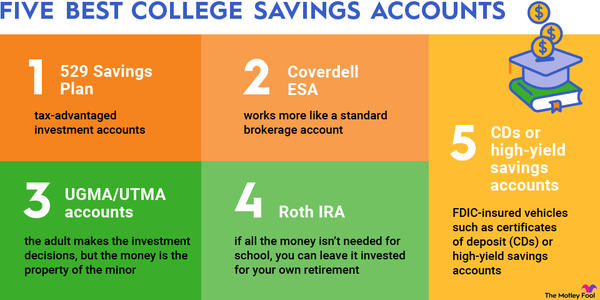Turning 40 is a big age milestone. But celebrating your 40th birthday can also be stressful if you're worried that you're behind your peers financially. You may be starting to think about your retirement goals more seriously.
By age 40, you should have saved a little over $185,000 if you're earning an average salary and follow the general guideline that you should have saved about three times your salary by that time. The median salary for full-time employees between the ages of 35 and 44 was $65,676 in the fourth quarter of 2023, according to the U.S. Bureau of Labor Statistics.
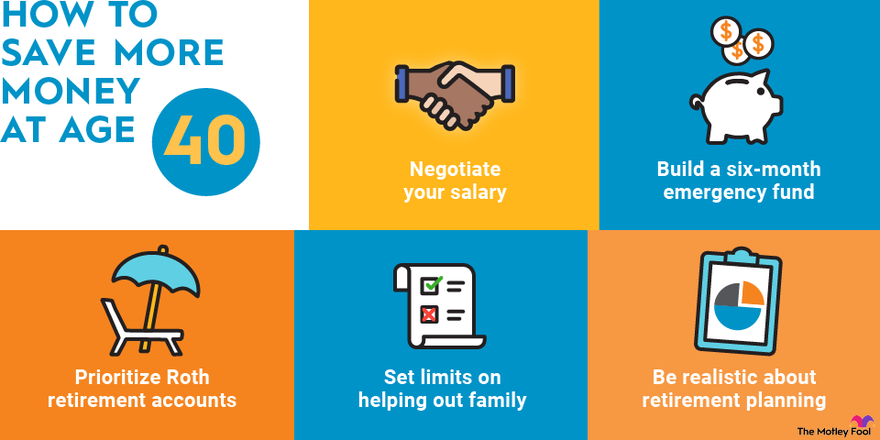
Of course, there's no hard-and-fast number or rule that applies to everyone. A good savings goal depends not just on your salary, but also on your expenses and how much debt you're carrying.
If your savings balance is lacking, don't panic. You probably still have decades of working and investing to build your nest egg. But you can't delay any longer. It's essential to increase your savings rate, even though it will require some sacrifice.
Savings Account
What is the average savings at 40?
What is the average savings at 40?
Don't have $185,000 saved? Neither does the average 40-year-old. Only about 55% of people between the ages of 35 and 44 have a retirement account, and the median balance is $60,000.
While the median net worth for this age group is $91,110, according to the Federal Reserve's 2019 Consumer Finances Survey, just over one-third of the demographic has student loans, with a median outstanding debt of $21,000. About half of those surveyed in this age range have a credit card balance, with the median balance being $2,700.
How to save more money at age 40
How to save more money at age 40
If you're behind on saving money at age 40, you probably still have two decades or more to make up for lost time. But you've also missed out on the substantial compound growth that you would have captured had you started saving money at age 25 or 30. Catching up is still doable, but you'll have to save more to make sure you aren't left with a retirement savings shortfall.
Here's what you can do to boost your savings in your 40s:
Negotiate your salary
You may think that if you can't save money, your problem is overspending. But that's not always the case. Sometimes the problem is that your income simply isn't enough to cover the bills and save enough for retirement.
By age 40, you've hopefully developed skills that make you valuable in the workplace. If you've been at your job for a long time, research your salary using sites such as Glassdoor and Payscale, along with U.S. Bureau of Labor Statistics data, to make sure you're being paid competitively. If your salary is on the low end, it may be time to make the case that you deserve a raise based on your accomplishments -- or to start searching for a new, better-paying position. If you're self-employed, it may be time to reassess your hourly or contract rates.
If you don't think that getting a pay raise or switching to a higher-paying job is feasible, then consider whether earning side income is a possibility. Collecting an extra $100 a week of income after taxes and investing that money could add nearly $300,000 to your savings over 20 years, assuming 10% annual investment returns.
Build a six-month emergency fund
An emergency is one of the biggest threats to your retirement planning. If you get sick or lose income when the stock market is down, you risk having to withdraw money from your retirement accounts at a loss -- and also being liable for taxes and an early withdrawal penalty.
Make saving six months' worth of expenses in a high-yield savings account a high priority at age 40. In your younger years, a three-month emergency fund may have sufficed. But, as you get older, your chances of a medical emergency are greater. Your requirements for an emergency fund also increase when you have kids or purchase a home.
After you've established your six-month emergency fund, if you have any credit cards or student loans, make paying them off your next priority. Then use the money you were spending on payments to invest more in your retirement.
Prioritize Roth retirement accounts
If you're trying to catch up on your savings by investing in an individual retirement account, choosing a Roth IRA over a traditional IRA is a smart move. You won't get a tax break this year for contributing, but when you retire, your withdrawals are tax-free. Having a tax-free source of income in retirement is invaluable, particularly if you retire a bit short of your savings goal.
Many 401(k) plans now offer a Roth 401(k) option in addition to a traditional tax-deferred plan. If you have an employer-sponsored retirement account, check with your HR department to find out whether there's a Roth version of your plan.
Related retirement topics
Set limits on helping out family
Many people become part of the sandwich generation in their 40s because they're raising their own families while also trying to help their aging parents.
When you're behind on your own savings goals, you need to set hard limits on how much you can afford to help with others' expenses. If you want to help support your parents, then work the amount you can afford into your budget. Communicate with your parents and siblings about what they can expect from you.
You also need to prioritize your retirement savings over saving for your kids' college education. This may be difficult, but your kids have more options for funding their education -- such as financial aid, student loans, and working part-time -- than you'll have if you retire with little savings.
Be realistic about retirement planning
Retirement can seem like an abstract goal when you're in your 20s or 30s, but in your 40s, it may start to materialize on the not-so-distant horizon. This may create a new sense of urgency about saving money, which is a good thing.
Make sure you're setting realistic goals, particularly if you're catching up on saving. Don't plan on retiring early at age 50 or claiming Social Security as soon as you turn 62 if you're behind on your saving objectives. Most financial planners recommend replacing about 70% to 80% of your income when you retire, so keep this guideline in mind as you start to make retirement plans.
At age 40, you still have time to save for retirement, but you also don't have time to waste. Some short-term sacrifices now will pay off nicely in a couple of decades.
Expert advice on retirement saving
Expert Q&A on Retirement Saving

Keri Dogan
The Motley Fool: Because of the COVID-19 pandemic, many Americans now fear they won’t be able to retire. What is your advice for someone who may be worried about retiring because of recent financial setbacks?
Keri Dogan: Concern about retirement income is mounting among Americans approaching retirement, with many worried they won’t have enough money to last their lifetime. This is especially true given the uncertain world we live in, due in part to the pandemic, as well as market volatility and inflation so top of mind this past year.
If you are still in your saving years, retirement savers justifiably concerned about the impact of market volatility may be reassured to know there are important arguments that can reinforce one’s faith in looking long-term and not making changes based on short-term economic swings. One of these is the profound impact making continuous contributions over even a relatively short period of time can have on one’s retirement readiness. For example, if you contributed the 2021 maximum $6,000 IRA contribution at age 25 and keep it going all the way to age 70, you would have amassed $1,440,5928 by retirement. Even shorter term, according to Fidelity’s analysis, the average 401(k) balance for people who have been in their same plan with the same employer for just a 5-year continuous period is more than double the average retirement account balance. This can make a huge difference.
If you are near or entering retirement, as a general rule of thumb, Fidelity believes that day-to-day, must-have expenses in retirement like housing, food, and health care, are best covered by lifetime guaranteed income sources, such as Social Security, pensions, or income annuities. If you can afford to, consider paying nice-to-have, more easily adjusted expenses with your withdrawals from savings. Another factor is the age at which you stop working. Most people are eligible to receive Social Security benefits as early as age 62, but those benefits increase if you wait until your full retirement age (usually 67) and rise even more if you delay until age 70. The earlier you retire, the more you will have to rely on savings to meet your income needs, because your Social Security payments will be lower. So, if you retire but can afford to wait to draw down Social Security until you are 67-70, that may be helpful—and also, don’t forget about the possibility of working part time in retirement.
The Motley Fool: According to a recent survey by The Motley Fool, men were most likely to say, "I rely on Social Security benefits a little," while women were most likely to say, "I rely on them a lot." Men were also more likely to be "slightly worried" about losing their benefits, while women were most likely to be "very worried." Why do you think men seem to fare better than women in retirement years and have more confidence in their financial stability? What are the potential implications of this trend?
Keri Dogan: One factor may be that women are more likely than men to live longer, with a statistically good chance of living into their mid-90s. That means, naturally, they need their income to last longer. Longer lives mean more years to enjoy, but it also requires anticipating more expenses in retirement, especially higher health care costs.
Because women are likely to live into their 90s, Social Security is a critical component of retirement income. That is why it is important for women to understand Social Security eligibility to claim maximum monthly benefits. Making the decision as to when to take the initial benefit will permanently impact how much is received monthly.
It also means women have a greater need to have a comprehensive retirement plan in place. And yet, according to Fidelity research, only 68% of women say they do have a financial plan in place. Planning can have a powerful impact on a feeling of financial wellness, and what we have observed is that greater planning leads to an increased sense of confidence in a variety of areas, both short- and long-term. While men tend to feel like their financial lives are more in control than women, women’s confidence matches that of men when they have a plan in place.
The Motley Fool: When asked about the 8.7% cost-of-living adjustment for Social Security benefits in 2023, 55% of respondents said they didn’t think it was enough. Why do you think retirees feel this way when it's one of the biggest COLAs in history? Did the SSA make a mistake in not raising it more?
Keri Dogan: This year's increase is the largest in a generation and is definitely a helpful boost for many retirees, especially those who are looking to live within their Social Security budget.
The increase could help ease the pain of record inflation for many retirees struggling with rising costs for everything from gas to groceries. And while many retirees are not as adversely impacted by inflation in some areas (i.e. gas for travel and food costs, as their needs here may not be as great), they especially feel the pinch when it comes to rising health care costs. We also see that retirees are already adept at reducing their essential and discretionary spending and have been throughout the pandemic.
While the concern retirees may feel about the size of the increase is understandable, one piece of advice for retirement savers—or those in retirement—is to try not to worry too much. Based on what we know about retirees and their satisfaction once they get to retirement, most aren’t spending as much as they could be and yet they’re feeling pretty good about where they are – satisfied with retirement and at the same/higher standard of living compared to pre-retirement. In fact, Fidelity analyzed extensive spending data and found that most people needed to replace between 55% and 80% of their pretax, preretirement income after they stopped working to maintain their lifestyle in retirement.












